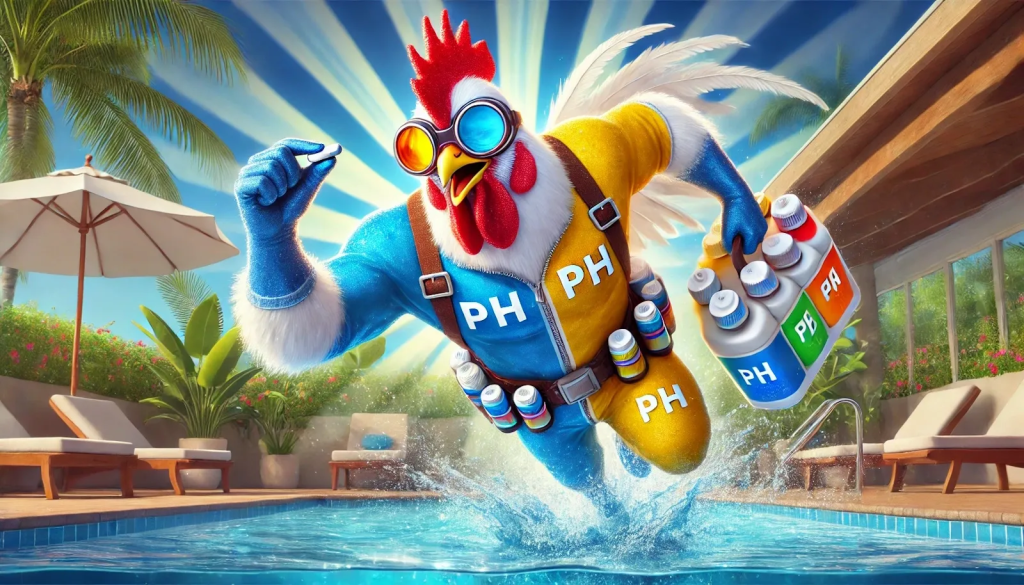
If your pool water looks clear but feels off, your pH might be staging a silent rebellion. This section is your go-to table of contents in paragraph form for identifying, correcting, and preventing high pH before it wrecks your water quality. We will begin by explaining what causes high pH to rise unexpectedly, including weather, fill water, and chemical treatments that sneak the numbers up without warning. From there, we will explore how high pH affects chlorine efficiency, filter performance, swimmer comfort, and surface scaling so you can understand the real damage behind those numbers.
Next, you will get a full step-by-step breakdown for lowering pH safely using a smart chemical strategy. We will walk through proper testing, dosing with acid, circulation timing, and how to make adjustments without triggering further imbalance. This section also covers the most common mistakes pool owners make when trying to fix pH too fast or with the wrong products. If your pool is still fighting back after all the right moves, we will finish with signs it is time to bring in a professional before high pH becomes high-stress.
Get ready to steady your chemistry and take control. By the time you finish this section, your pool will be balanced, beautiful, and ready for cannonballs without the sting. Would you like to move into the first section on what causes pH to rise?
How to fix high or low pH in your pool before it causes serious water and equipment problems
When your pool’s pH is out of balance, everything starts to go sideways. The water might look fine at first, but then it turns cloudy, corrosive, and irritating. High pH makes your chlorine weak and invites scale buildup on surfaces. Low pH does the opposite, chewing through your pool’s metal parts, damaging vinyl liners, and stinging swimmers like poolside pepper spray. If your pool is suddenly acting up, there is a good chance pH is behind the drama.
To fix the issue, you first need to understand what causes pH levels to shift. High pH, which is anything above seven point six, can come from adding too much sodium carbonate, high total alkalinity, or from increased aeration caused by water features, spas, or waterfalls. Hard water with lots of minerals and recent shocking with calcium-based chlorine can also push your pH too high. On the other end, low pH, which is below seven point two, can be triggered by rainwater, splash-out, excess acid dosing, low alkalinity, or high bather load. Even small changes can throw off the balance quickly.
The effects of pH imbalance hit both your swimmers and your pool system. When the pH is too high, your water gets cloudy and dull, your chlorine stops working properly, and scale forms on surfaces like tiles, ladders, filters, and heaters. Swimmers often experience dry, itchy skin and eye irritation, and you burn through extra chemicals trying to fix the symptoms without addressing the cause. When the pH is too low, the water becomes acidic and starts to corrode metal parts, damage plaster, and create burning sensations in swimmers’ eyes and skin. Chlorine gets too aggressive and releases a strong odor while losing its long-term effectiveness.
Balanced pH, ideally between seven point two and seven point six, keeps everything working together smoothly. If your pool is cloudy, uncomfortable, or chemically unpredictable, correcting your pH should be the first move on your to-do list. Would you like to continue with the step-by-step instructions to lower high pH safely?
Step-by-step guide to raising or lowering your pool pH and when to call in expert help
Balancing your pool’s pH is not about guesswork or dumping in random chemicals. It is a clear process that helps you maintain comfort, protect equipment, and keep your sanitizer working efficiently. If your pH is too low, start by testing both pH and total alkalinity. If alkalinity is also low, raise it first since pH tends to follow. To raise pH, use sodium carbonate also known as soda ash. Add it slowly while your pump is running and broadcast it evenly across the water’s surface. Do not just pour it into the deep end. Wait four to six hours, retest, and repeat in small doses until your pH reaches the ideal range of seven point two to seven point six.
If your pH is too high, confirm whether total alkalinity is also high because both often need to be lowered together. Use either muriatic acid or sodium bisulfate to bring down pH. If using muriatic acid, dilute it in a bucket before slowly pouring it around the pool with the circulation system on. After a few hours, retest and continue making adjustments in small increments. Never lower pH below seven point two, as acidic water causes serious damage to swimmers and pool surfaces.
Common mistakes can make things worse. Adding too much chemical too quickly causes major swings and wastes product. Ignoring alkalinity prevents your pH from staying stable. Testing too soon after dosing gives inaccurate readings, and using household products or pouring undiluted acid in one spot can damage plaster and vinyl.
If you are doing everything right and still cannot stabilize your pH, it is time to bring in professional support. Persistent problems could mean your circulation or filtration system is underperforming or that your test kit is unreliable. Hidden issues like metal or phosphate contamination can also affect your chemical balance. Rise and Shine Pool Service can help with advanced testing, proper diagnosis, and tailored treatment that restores chemical clarity fast.
Rooster Ray’s final word on pH balance and how to avoid water chemistry chaos

Pool chemistry may sound like it belongs in a laboratory, but you do not need a degree to manage your water like a pro. pH balance is not rocket science. It is routine. When your pH sits between seven point two and seven point six, your chlorine is more effective, your swimmers are more comfortable, and your equipment stays in working order without stress. Let it drift, and suddenly you are facing cloudy water, scale buildup, irritated eyes, and filters working overtime.
Fixing pH is not a guessing game. It is about regular testing, consistent care, and smart dosing. Test weekly. Adjust in small steps. Know your levels before adding anything. Think of it like pool flossing. It might not be glamorous, but when you skip it, everything goes sideways.
Do not let high or low pH creep up and take over your backyard. Watch your numbers, treat your water with precision, and your pool will thank you with smooth swims, happy gear, and crystal-clear water all season long.
Rooster Ray, pH enforcer, chemistry coach, and full-time guardian of backyard bliss
